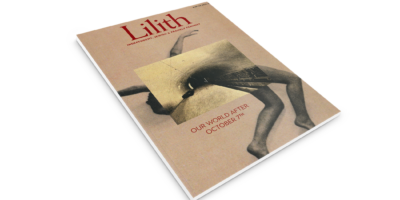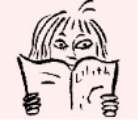
Davon Loeb: Writing In-Between (and Outside) the Lines
Davon Loeb’s The In-Betweens, is aptly called “A Lyrical Memoir.” It is dedicated “To all the bodies that became my memoir and to my wife and children.” Written in short, standalone, poetic essays, the book opens with the scenes in which Loeb’s parents met and fell in love. The sense of romance and mystery and unanswered questions Loeb introduces at the outset waft across the rest of the memoir. He imagines what it was like between his white biological Jewish father, and the Black woman who raised him. He paints the love affair that resulted in his birth, and their efforts to avoid the “adulterous clichés.”
As the book unfurls, so does Loeb’s sense of himself. Raised in a large and loving Black family, he prefers books and stories to athletics. Light-skinned within his family and Black to the rest of the world, he has multiple identities, which he embraces and explores as he grows toward adulthood. Each chapter brings a new part of his story, and the enigmas and joys that come with coming of age.
As an adult, Loeb has embraced these many strands of his heritage into a captivating memoir. He spoke with novelist and critic Martha Anne Toll.
You came to writing from other creative pursuits. Tell us about your writing journey.
When I was a kid, I loved anything creative, from art to playing make-believe with action figures. Creativity defined me. Writing didn’t come until later, sometime when I was coming-of-age as a teenager, one who loved Hip-Hop and breakdancing. It seemed that becoming a writer was the natural trajectory for me because writing creatively is a composite of the things that interested me. For example, poetry is present in Hip-Hop and breakdancing. This brought me to writing, and eventually to academia.
As a high school teacher, Does your teaching inform your writing?
If you teach someone how to write better, you will write better yourself. It’s simple. I use the lessons I teach to my students in my own practice. So, my writing is really never too stubborn to change.
So, I write in my life’s margins—from when my children are napping, to my lunch breaks, in the mornings before everyone is awake, to whenever there’s a breath of non-scheduled time—I pour my mind into my work.
How do you make time for it?
I am a high school and college English teacher and dad to two small children, so I do not have much time. Almost every moment of my day is filled with responsibilities that rival my need to write. But I do remember someone said to me once that we, parents especially, have to write in the margins of life. So, I write in my life’s margins—from when my children are napping, to my lunch breaks, in the mornings before everyone is awake, to whenever there’s a breath of non-scheduled time—I pour my mind into my work. Rarely do I produce a new piece in one sitting, but what is most important is that I routinely exercise my creative muscles, no matter how little or how much I write.
Tell us about the title of your book.
As a kid, I remember filling category boxes before taking the many standardized tests in school. “Pick one,” and I was asked to choose one category box that listed races. How could I pick just one when I was, ethnically, as Black as I was Jewish-white? Culturally, I was raised in a Black-Latino household—but then, I didn’t see or understand my race like that yet, for being two races was a constant conflict, a reminder that I was different from the people around me. I chose Black because I was the Black kid in a white community, although I was the half-Black kid in my family. The In-Betweens wants to challenge categories, challenge classifications, challenge all the ways in which we all feel in-between spaces, literally and figuratively.
Can you talk about your Jewish heritage and what role, if any, it plays in your life?
My Jewish heritage plays a role in my writing more than in my life. While I was not raised by my Jewish father and spent minimal time with my Jewish family, being Jewish is who I still am, and it took a lot of time and maturity to acknowledge that, to embrace being Jewish as much as I embrace being Black, that both are my identity. My Jewish family are creatives; I am a creative, and to deny them is to deny me of myself.
Your book has a lot to say about identity and race in America. If you had a magic wand, what would you wish for our country going forward?
There are so many things to fix in America, but if I had a magic wand and could wish for anything moving forward, it would start in our schools, starting with education. We need more teachers of color. We need more books written by authors of color. We need curricula, that does not ban books and programming, curricula that reflect our very diverse and underrepresented country, including people of color, Asian and East Asian, Indigenous, LGBTQ+, disabled, and the multitude of different religions and multiculturalism that exists here in America. We need real representation in schools because representation matters. When we teach our children to be better Americans, we will start to grow a better America.
Your book is organized into short chapters that each can stand alone. Together they make a wonderful whole. Can you tell us how you came to choose this structure?
I am a poet before I am a memoirist, so I worked as a poet does when structuring a poetry collection. Each poem, or each essay, can stand alone but serves to build a larger narrative. I married that style to the style of writing lyrical essays, to reinforce the aesthetic I was after. Readers can essentially read The In-Betweens at any point in the book or read it as a whole, from start to finish and experience the same nuance and catharsis.
What’s next for you?
I’ve written a lot about my parents, and since I published The In-Betweens, my wife and I have welcomed two children. Now that I am a parent, I am especially interested in exploring how my upbringing has affected me as a father. I’ve published a few pieces on parenting, but I’ve published an essay, “Breakdancing Shaped Who I am as a Black Man and Father,” was later listed as a notable in the Best American Essays 2022 anthology and is adapted and featured in The In-Betweens. I also have an essay forthcoming at Gulf Coast about my daughter and me. What’s next for me is the collection of lyrical essays I’m writing on parenting and fatherhood with my agent, Eric Smith, of PS Literary.
___
Martha Anne Toll is a book critic and novelist. Her debut, THREE MUSES is shortlisted for the Gotham Book Prize and won the Petrichor Prize for Finely Crafted Fiction. Visit her at www.marthaannetoll.com, TW @marthaannetoll, IG @marthatoll.



